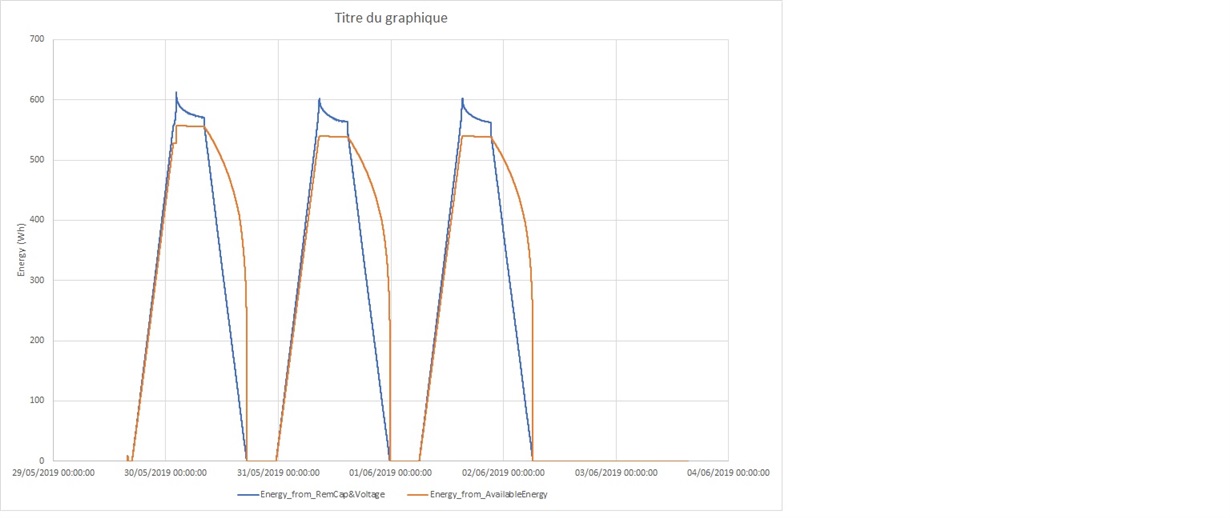Other Parts Discussed in Thread: GPCCHEM
Hi,
I am faced with a strange behavior of the Available Energy counter, during battery charge only. The value seems to wrap, it suddenly becomes negative, then, most of the time, becomes positive again before the end of charge. Positive values are correct, even after the event. When the value goes negative, it keeps incrementing at the same pace, but with a large negative offset.
No problem during discharge.
Here are some logs showing the issue during learning cycles on various batteries. The wrapping event does not occur at the same time nor the same value of Available Energy. However it seems to disappear for lower battery capacities.
20190514_HET_LiFe_25.6V_54.4Ah_GI_learning.log
20190520_HET_LiFe_12.8V_54.4Ah_GI_learning.log
20190517_HET_LiFe_25.6V_41.6Ah_GI_learning.log
20190524_HET_LiFe_12.8V_27Ah_GI_learning.log
I have also extracted graphs on the word document below:
All the learning cycles presented were successful.
I am using LiFePO4 cells with Chem ID 463, capacities range from 27Ah to 64Ah. Nominal cell voltage is 3.2V, Current are scaled by a factor of 4, and Energy scale is 2, seen from the gauge we thus have capacities ranging from 6750mAh to 16000mAh and energies ranging from 10800mWh to 25600mWh.
First hypothesis following a discussion with Bryan Kahler was a wrong value of the CC threshold parameter (still to its default value). However, setting the CC threshold to 90% of design capacity did not correct the issue.
Looking forward to your insights.
Best regards,
Jérémie



